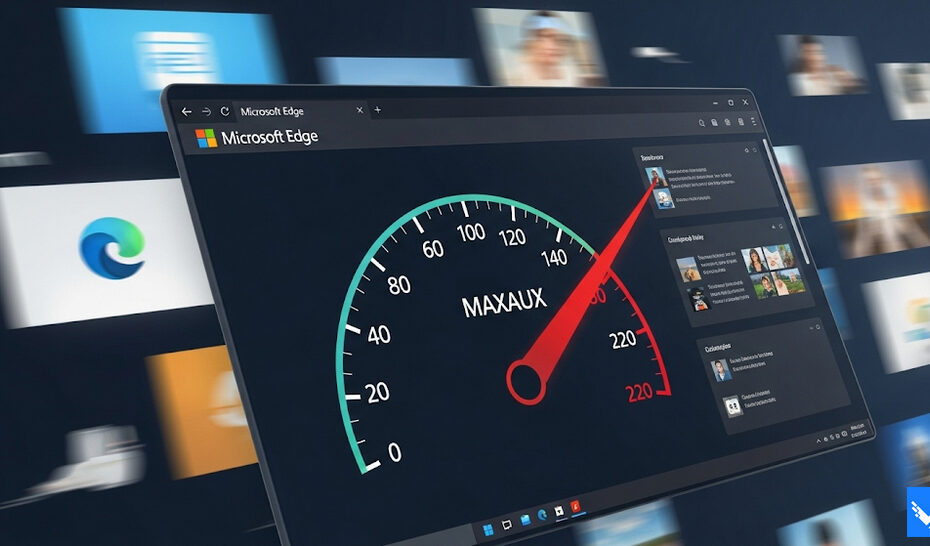Microsoft Edge has just hit a performance milestone that’s worth getting excited about. After months of dedicated optimization work, the browser has achieved something that might sound technical but has a real-world impact for millions of users: a global First Contentful Paint (FCP) time of under 300 milliseconds.
Table of Contents
- Why 300 Milliseconds Matters More Than You Think
- The Real-World Impact: 40% Faster Where It Counts
- The Engineering Challenge Behind the Scenes
- What’s Coming Next
- Your Role in the Performance Story
Why 300 Milliseconds Matters More Than You Think
Before we dive into what Microsoft accomplished, let’s break down why this specific number is so crucial. First Contentful Paint measures the time from when you click a link or type a URL (like https://www.waredata.com/) until the first piece of meaningful content appears on your screen. Think of it as the moment your browser stops showing you a blank page and starts displaying actual stuff you can see.
Industry research has consistently shown that once loading times creep past the 300-400 millisecond mark, users start feeling frustrated. It’s that psychological sweet spot where anything faster feels instant, and anything slower begins to feel sluggish. Microsoft Edge’s engineering team recognized this threshold and made it their North Star for performance optimization.
This achievement aligns perfectly with established web performance standards that developers and UX researchers have been advocating for years. When a browser can consistently deliver content in under 300ms, it creates what users describe as “instant responsiveness” – that satisfying feeling when everything just works without delay.
The Real-World Impact: 40% Faster Where It Counts
The engineering team didn’t just focus on abstract metrics. They targeted thirteen specific browser features that people actually use every day, achieving an average 40% reduction in load times across the board. Let’s explore how these improvements translate to your daily browsing experience.
- Settings: Jump in and tweak your browser faster than ever. Customization just got way snappier.
- Read Aloud: Launch web page narration quicker, with smoother playback, and explore more languages/accents/voices.
- Split Screen: Switch between tasks or windows almost instantly, with fewer annoying loading pauses.
- Workspaces: Pages feel responsive the moment they open. Dive into your workflow without that laggy feeling.
Want to see it in action? Check out this video showing the lightning-fast Settings load – the difference is stark!
The Engineering Challenge Behind the Scenes
Achieving sub-300ms performance across multiple features simultaneously represents a significant engineering challenge. Browser optimization isn’t just about making one thing faster – it’s about ensuring that improvements in one area don’t create bottlenecks elsewhere. The Microsoft Edge team had to carefully balance resource allocation, memory usage, and processing priorities to deliver consistent performance across all these features.
This type of optimization requires a deep understanding of how different browser components interact with each other. When you’re working with such tight performance budgets, every millisecond counts, and engineers must identify and eliminate inefficiencies at multiple levels of the software stack.
What’s Coming Next
Microsoft’s engineering team views this milestone as a foundation rather than a finish line. They’re already targeting more features for speed boosts in the coming months, including:
- Print Preview
- Extensions Management
- …and more!
This roadmap approach suggests they’re taking a systematic approach to browser optimization, tackling features based on both user impact and technical feasibility.
The commitment to ongoing performance improvements reflects an understanding that user expectations continue to evolve. As web applications become more sophisticated and users become accustomed to faster experiences, browsers must continuously raise their performance bar to stay competitive.
Your Role in the Performance Story
Microsoft Edge’s development team emphasizes that user feedback plays a crucial role in guiding their optimization efforts. They’ve built feedback mechanisms directly into the browser, accessible through Settings and more (…) > Help and feedback > Send feedback. This direct line of communication allows them to understand which performance improvements matter most to real users in real-world scenarios.
This collaborative approach to browser development represents a shift from traditional software development cycles. Instead of making assumptions about what users need, the team can gather data and feedback to inform their optimization priorities, ensuring that engineering resources focus on improvements that deliver the most meaningful impact.
The achievement of sub-300ms First Contentful Paint represents more than just a technical milestone – it’s a demonstration of how focused engineering effort can deliver tangible improvements to the daily computing experience. As browsers continue to evolve and web applications become more demanding, these performance foundations become increasingly important for maintaining the responsive, enjoyable online experience that users expect.
Maybe you like other interesting articles?

